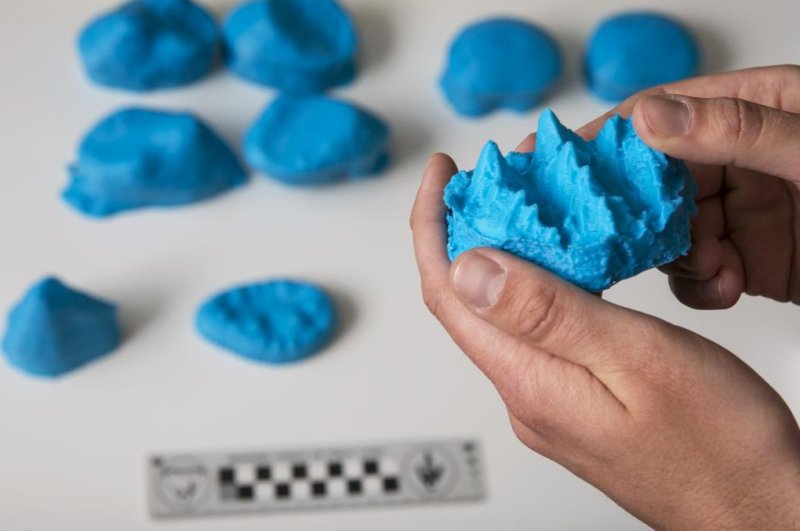Scientists created 3D molds of the diversity of teeth found in the jaws of ancient crocodyliforms, the distant cousins of modern crocodiles and alligators. Photo by University of Utah
June 27 (UPI) -- Paleontologists have determined that some groups of crocodiles were not the meat-eaters their descendants became. After a detailed analysis of ancient crocodile teeth, scientists concluded vegetarianism evolved among the distant cousins of modern crocodylians at least three different times.
"The most interesting thing we discovered was how frequently it seems extinct crocodyliforms ate plants," Keegan Melstrom, a doctoral student at the University of Utah, said in a news release. "Our study indicates that complexly shaped teeth, which we infer to indicate herbivory, appear in the extinct relatives of crocodiles at least three times and maybe as many as six."
Modern crocodylians all share a similar body type and simple, conical teeth, the necessary physiology for life as a semiaquatic generalist carnivore. But when paleontologists began to survey the teeth of extinct species, the distant relatives of today's alligators and crocodiles, they found a diversity of tooth shapes.
Specifically, scientists found evidence of heterodonty, different shaped teeth along different portions of the jaw, among ancient crocodyliforms.
"Carnivores possess simple teeth whereas herbivores have much more complex teeth," Melstrom said. "Omnivores, organisms that eat both plant and animal material, fall somewhere in between."
"Part of my earlier research showed that this pattern holds in living reptiles that have teeth, such as crocodylians and lizards," said Melstrom. "So these results told us that the basic pattern between diet and teeth is found in both mammals and reptiles, despite very different tooth shapes, and is applicable to extinct reptiles."
To reconstruct the diets of ancient crocs, scientists used an analysis method designed to predict the eating habits of modern mammals based on their tooth morphology. Researchers measured and analyzed 146 teeth from 16 species of extinct crocodyliforms. They shared their findings in the journal Cell Biology.
The comparative analysis showed plant-eating crocodyliforms emerged early in the evolution of the reptiles and was present among crocodylians groups from the end of the Triassic until the end of the Cretaceous. Along the way, crocs adopted vegetarianism at least three separate times, and possibly as many as six.
"Our work demonstrates that extinct crocodyliforms had an incredibly varied diet," Melstrom said. "Some were similar to living crocodylians and were primarily carnivorous, others were omnivores and still others likely specialized in plants. The herbivores lived on different continents at different times, some alongside mammals and mammal relatives, and others did not. This suggests that an herbivorous crocodyliform was successful in a variety of environments."
And yet, herbivorous crocodyliforms disappeared from the planet after the mass extinction that killed the dinosaurs. Melstrom hopes followup studies will help explain why crocodyliforms diversified their diets in the wake of the end-Triassic mass extinction event but not after the end-Cretaceous mass extinction.















